As more applications are either migrated or originally built in the cloud, the entire application stack morphs with the changes to leverage new cloud-native technologies. Typical stacks now look markedly different than those just a few years ago.
Modern apps aren’t using your father’s tools and the once-dominant market share some legacy solutions used to command are dwindling. The changes are led by an evolution in the development and deployment lifecycle, the rise of microservices and a small side project by Amazon that turned into a gargantuan business assisting cloud development.

How Public Cloud Growth Impacts Database Market Share
In Sumo Logic’s third annual ‘State of Modern Applications and DevSecOps in the Cloud’ report we found AWS has a 70 percent market share of modern apps built in the cloud. Though Amazon Web Services (AWS) is facing added resources from other major players, notably Microsoft and Google, AWS is growing at a tremendous clip and has become the clear market leader.
GeekWire charts their revenue growth through Q1 2018 that helps illustrate this ascent. Not shown in the chart, however, is their Q2 performance of $6.1 billion, a 49 percent growth rate. It’s safe to assume this market lead isn’t an anomaly.
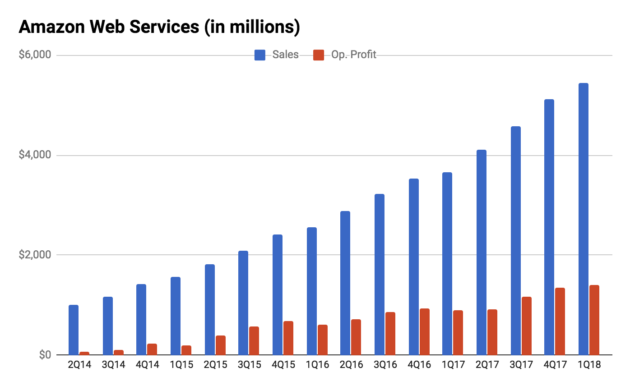
Source: Geekwire
The rise in cloud adoption has led to a drastic change in the database market share as well. Since databases sit at the core of many applications, architects have to make a choice about which makes more sense for their app use case. The Modern App Report found NoSQL edges out relational databases (RDBMS) 45 percent to 39 percent. NoSQL has come to mean “not only SQL” for its use with unstructured data and wide-ranging flexibility.
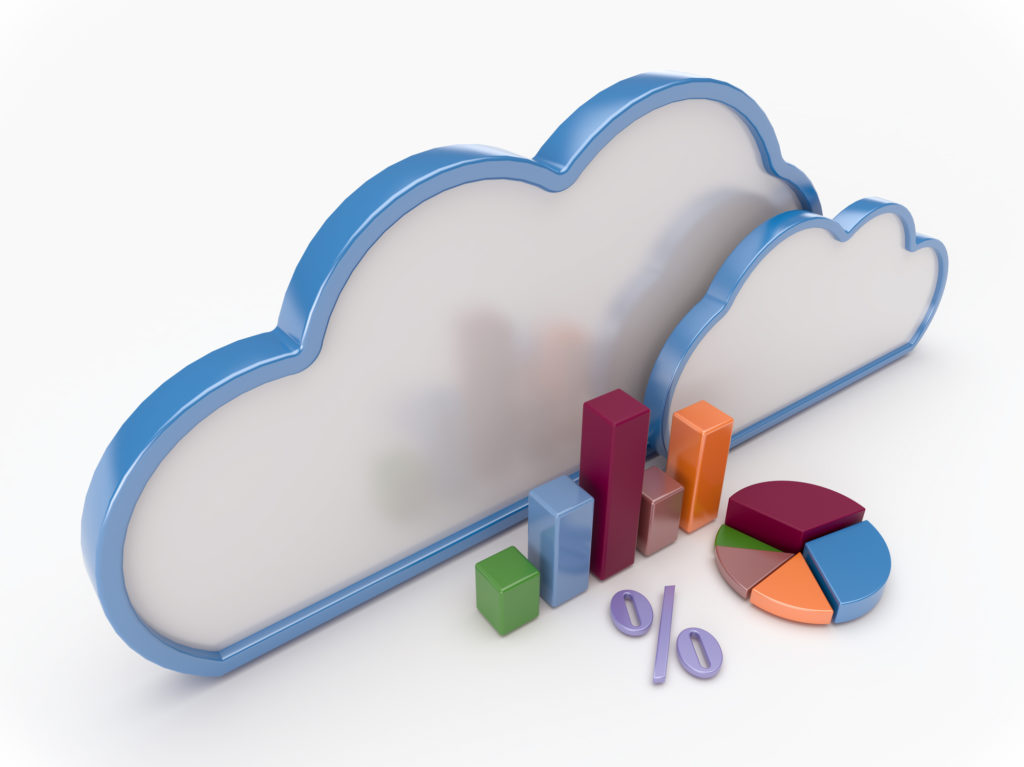
This changing of the guard can largely be attributed to the data gathered by modern applications. Relational databases thrive in simple tabular data, but today’s data is complex with geospatial models and multi-level nesting functions using JSON. The flexibility NoSQL offers is necessary for modern apps operating on high-velocity cycles.
Unsurprisingly, AWS promotes NoSQL claiming, “NoSQL databases are a great fit for many modern applications such as mobile, web and gaming that require flexible, scalable, high-performance and highly functional databases to provide great user experiences.”
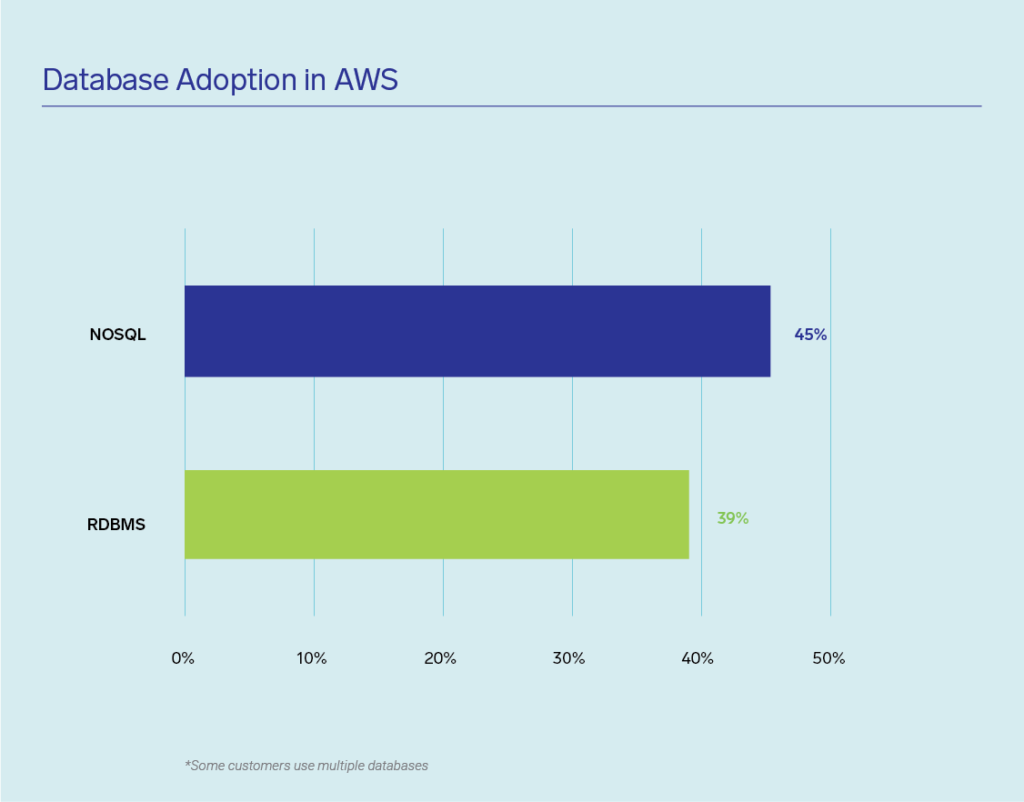
Source: Sumo Logic State of Modern Applications and DevSecOps in the Cloud report
What Does This Mean for Oracle, Microsoft and Other Legacy Databases?
DevOps teams need more agile and flexible tools built for continuous deployment. These buzzy trends are having tangible impacts on legacy tools, notably databases. Oracle, once the dominant database in the market, isn’t in as high of demand as more teams opt to use NoSQL databases in AWS and other public cloud environments.
The Modern App Report confirms this trend. Only 5.4 percent of the 1,600+ surveyed companies developing modern apps claim to use Oracle. The “not only SQL” crowd advocate NoSQL databases complimenting RDBMS and subsequently several common stacks use multiple databases.
The report accounts for these use cases and after looking at the 5.4 percent number through this lens, it may appear even more bleak for the legacy vendor.
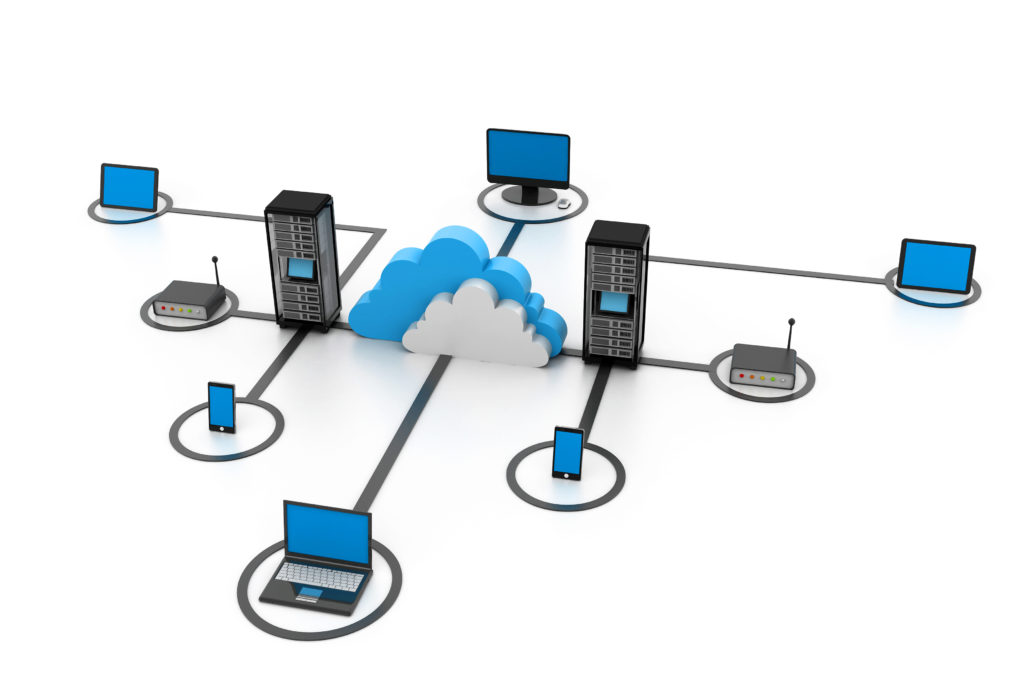
The other legacy database on the list — Microsoft SQL — performs a little better than Oracle with 7 percent of respondents reportedly using it. Combined, they’d still only be the fourth most popular database in the report.
Is the beginning of the end for Oracle and Microsoft? Hardly. There are massive legacy infrastructure shops out there standardized on Oracle. However, it’s interesting to analyze quantitative evidence of the shifting wave. The companies surveyed in the report are often the early adopters leveraging the latest technologies to engineer truly innovative apps free from the red tape and legacy technical debt some massive enterprises are unfortunately burdened with. This will be an interesting data point to monitor in subsequent reports.
According to the report, MySQL is the top database in AWS with 19.1 percent adoption. Though MySQL is another RDBMS, it narrowly edged out Redis with 18.9 percent of the market. In fact, four of the top six databases in the report are NoSQL, including MongoDB.
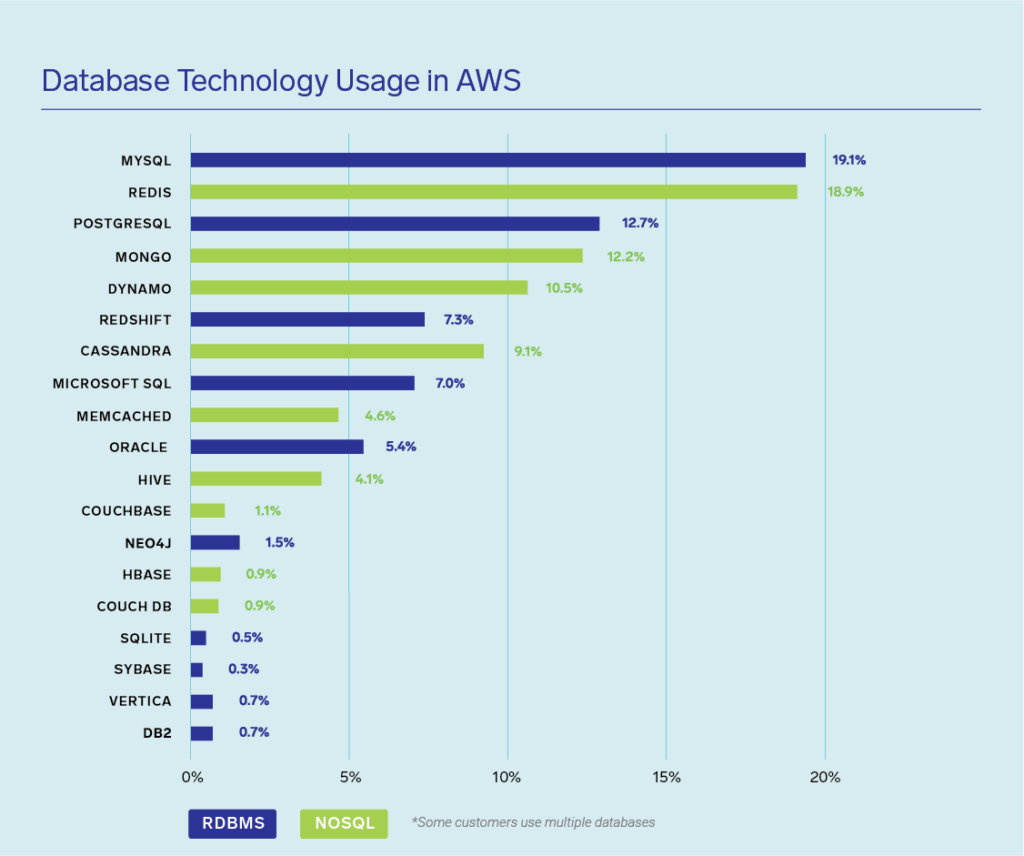
Source: Sumo Logic State of Modern Applications and DevSecOps in the Cloud report
Interested in reading more about the NoSQL vs. RDBMS trends for modern apps? Make sure you read the entire State of Modern Applications and DevSecOps in the Cloud with data on containers, serverless adoption, web servers, and more.


